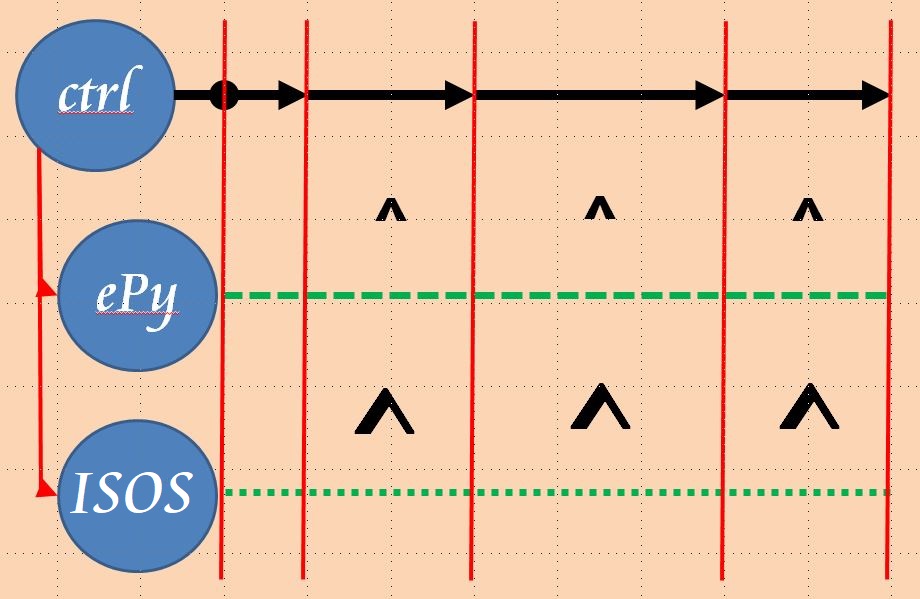This example demonstrates the difference you may experience when you write to
Gllobals directly from Embedded Python compared to native ObjectScript.
To make this demo useful I start 2 background jobs that simply write sequentially
to a dedicated global. A common control method signals for a synchronous start.
Similar a common stop & view interrupts data feeding.
That's the principle process:

As 2 jobs run in parallel the probability of just using sequential blocks is reduced.
During the development of this demo, I detected that the JOB command has problems
with ClassMethods in Embedded Python.
WARNING:
Due to the poor dimensioned Community License the start of the background jobs
may fail if you have other connections active at the same time.
During my series of tests, I found that ePy writes ~53% of the pure ISOS code
See also examples below.
The control method prepares the background processes and has 3 commands:
- 0 .. stop background jobs and show last run results
- 1 .. interrupt background jobs and show last run results
- 2 .. run data load in background jobs.
- Loading is interrupted after 60 sec to prevent breaking of the DB if not done manually
Example
USER>do ##class(dc.rcc.ePYvsISOS).do()
JobStart ISOS #3841
JobStart ePy #3842
Job Control [0=stop,1=view,2=go]: 2
Job Control [0=stop,1=view,2=go]: 1
^ePy(1,492029)=2022-03-11 20:49:32.851286
^ISOS(1,927383)=2022-03-11 20:49:32.851289
Job Control [0=stop,1=view,2=go]:
Job Control [0=stop,1=view,2=go]: 2
Job Control [0=stop,1=view,2=go]:
Job Control [0=stop,1=view,2=go]:
Job Control [0=stop,1=view,2=go]:
Job Control [0=stop,1=view,2=go]:
^ePy(2,4149270)=2022-03-11 20:50:54.620362
^ISOS(2,7719690)=2022-03-11 20:50:54.620371
Job Control [0=stop,1=view,2=go]:2
Job Control [0=stop,1=view,2=go]:
Job Control [0=stop,1=view,2=go]: 0
^ePy(3,3148765)=2022-03-11 20:50:54.620362
^ISOS(3,6714519)=2022-03-11 20:50:54.620371


I think empy sounds better than epy.